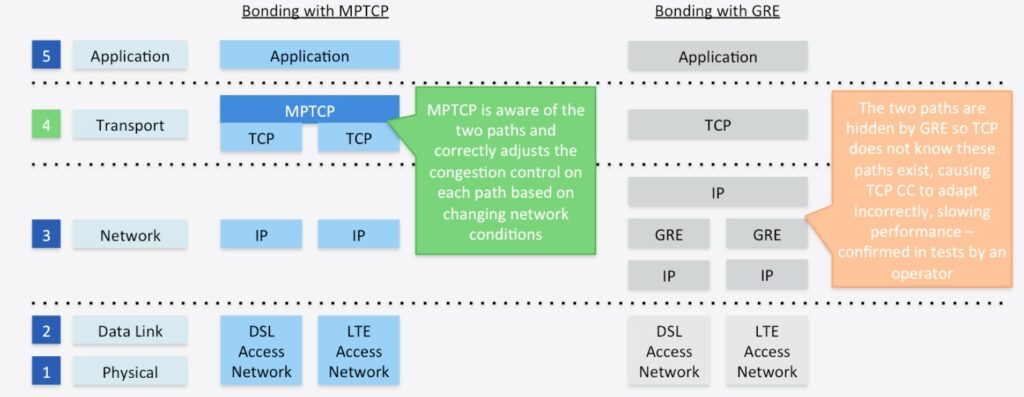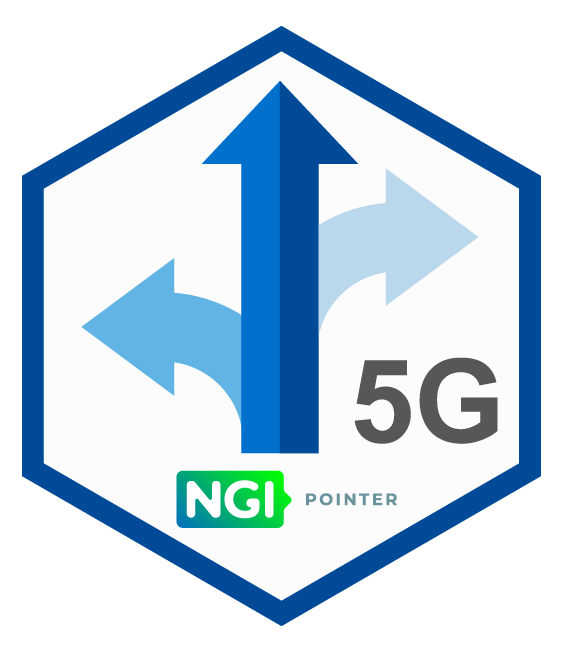NGI Pointer Project
Key people: Matthieu Baerts
Affiliation: Tessares S.A.
The challenge
Network access on mobile devices can result in bad user experience when switching from one network to another, like mobile, 4G or 5G networks and WIFI.
When we leave a building and we lose WIFI connection, we lose it slowly. At some point we are in a state in which we are not really connected: we may have a connection, but no data is passing. Therefore, there is a moment where the switch is not okay. The same thing can happen when switching from 5G to 4G.

Another issue is that mobile network is overloaded. The network’s capacity allows you to use a normal phone connected to two different networks at the same time and offload the maximum traffic to the WIFI and use the mobile network only if it is needed.
The protocol behind most connections when browsing on the Internet is called TCP, invented in the 70’s while mobility use cases were clearly not on the table. A recent extension to TCP, called MPTCP — short for Multipath TCP — aims to solve these problems by allowing the combination of different kinds of access together to improve the overall Internet experience.
These issues are a global trend affected by personal behaviors that move towards hyper connectivity. The scale of this matter is growing day by day because of new developments such as MPTCP. It has a function called ATSSS that manages 5G & Wi-Fi convergence. ATSSS stands for Access Traffic Steering, Switching & Splitting. It works as a rules engine where operators’ policies can be specified based on business drivers, technical drivers or a combination of both. Therefore, ATSSS plays a key role to ensure seamless connectivity between heterogeneous networks, and although it is based on Multipath TCP, there is no open-source based implementation in the market.
An operator using a 5G network may need to offload part of the traffic of its overloaded network to a Wi Fi based on in case of large events such as the Superbowl, a football match or any other overcrowded situation that can probably stress the service. In the near future it may even happen during normal peak hours in big cities.
Tessares develops this NGI project, Multipath TCP for 5G networks (MPTCP5G), to avoid these situations and bring stable and tested open-source implementations that enable vendors of Linux-based user equipments and servers to leverage all the benefits of the new protocol.

Tessares has demonstrated that a regular phone’s capability is enough to use two networks at the same time and offload the maximum of the traffic to the Wi-Fi and use the mobile network only if needed.
Network operators around the world are looking for a reliable system, and that is what MPTCP provides: reliability. It makes sure that your connection will always use what is available.
Why NGI pointer? what does it provide?
NGI Pointer provides the landscape to prove feasibility of Tessares’ projects, helping them to contribute to the open-source community by giving back part of what they received.
Furthermore, this project is also a proof of concept that could allow the company to present itself as the right developing partner for the main players involved in the deployment of 5G networks.
Thanks to their participation in NGI Pointer, Tessares can work hand in hand with the massive corporations mentioned before (Red Hat from IBM, Intel, Apple, Xiaomi) in a niche where the Belgian company is the sole European representative and improves the user experience.

The big picture
When it comes to 5G, there is a lot of marketing going on. A lot has been written and said, but the technology, mainly the software part, is far from being generally deployed. In fact, operators will still need the fixed network because it’s easier to control, tends to overload less and it’s easier to improve. Deployment of the 5G network will bring other issues like more antennas, new hardware (although it is not likely to change much), and other infrastructure.
In a project like MPTCP5G, the companies involved share the goals and provide different capabilities, like Tessares who is focused on the back-end side of the developments.
There are not many European companies like Tessares and for sure none can compete with American and Asian companies in this field. On the other hand, these companies hire European workers so even though the talent is here Europe cannot retain it properly.

Maybe the future role for European stakeholders can be focused on providing services to 5G networks. In the meantime, Tessares appears as the most promising chance to offer a crucial service in the connectivity landscape.





